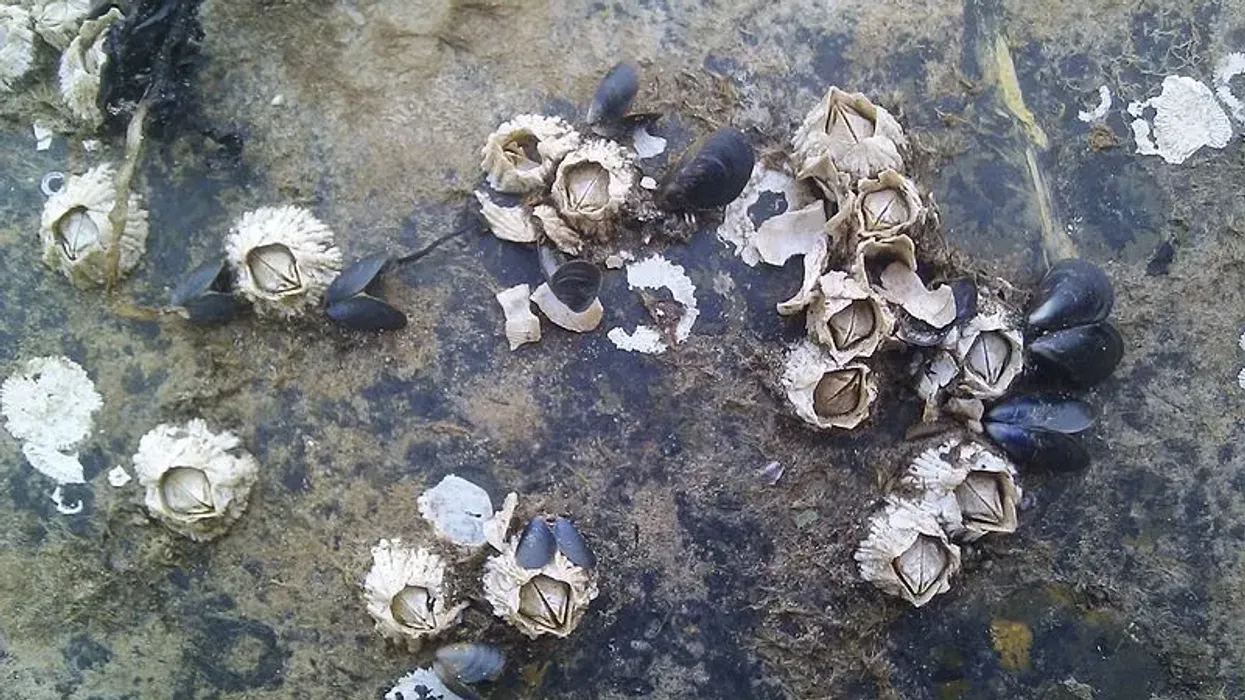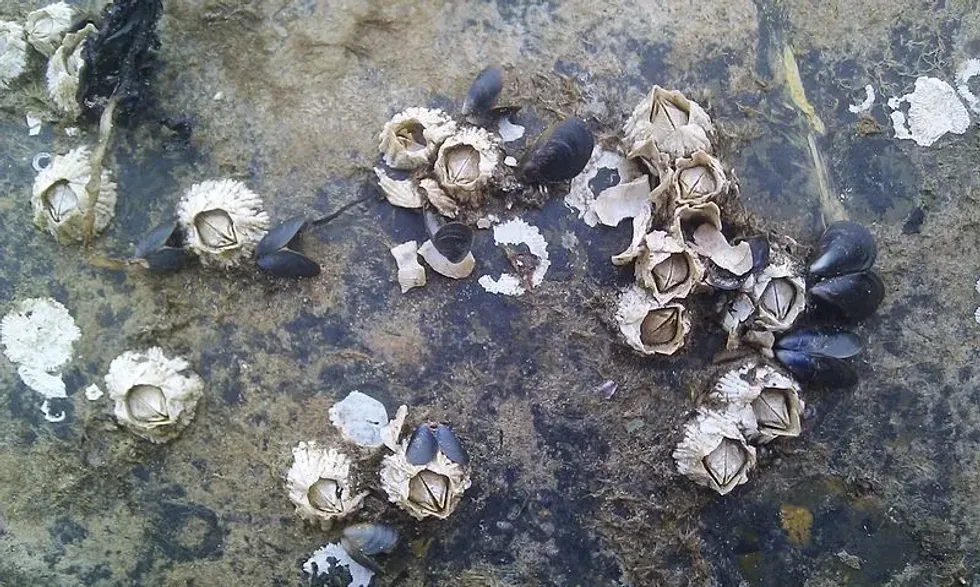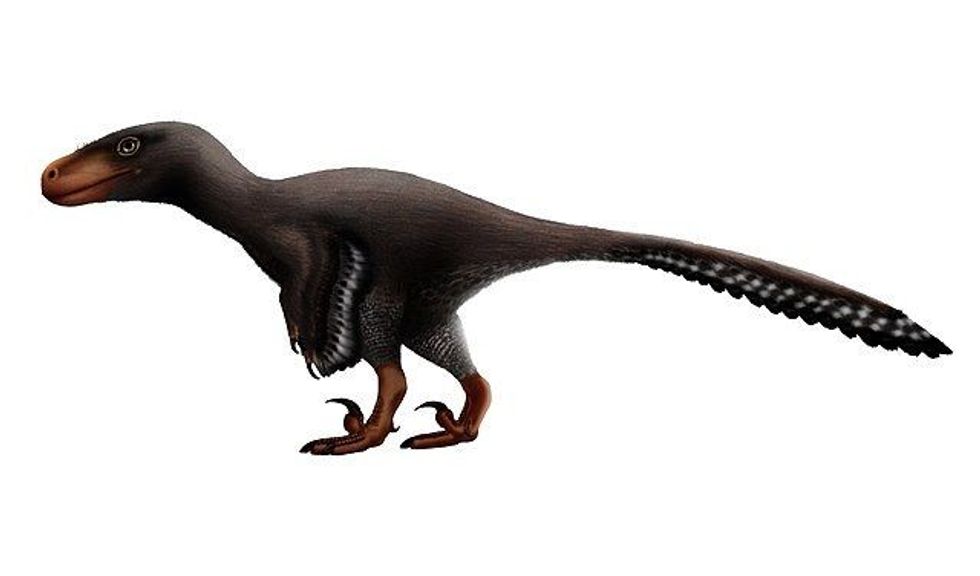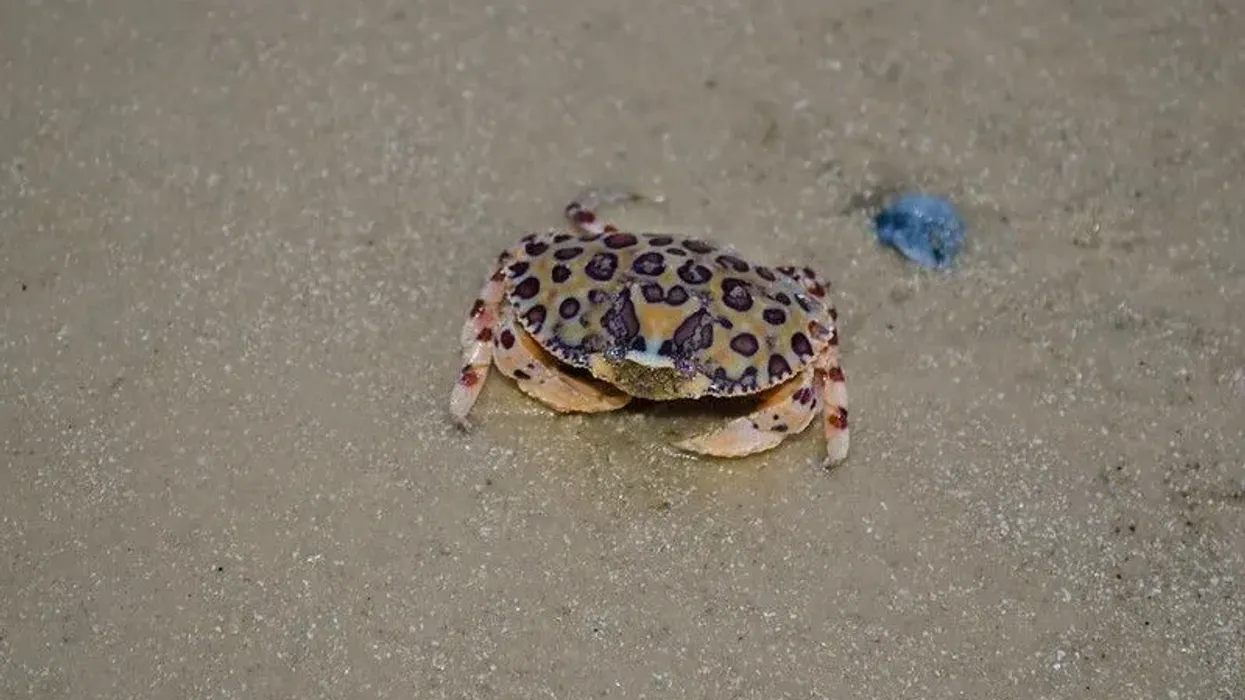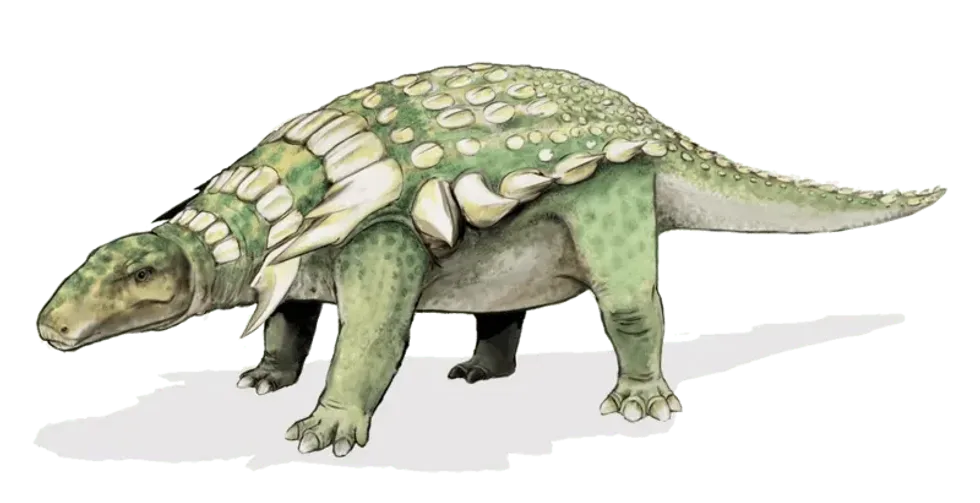The acorn barnacle's scientific name is Balanomorpha. These arthropods are known to be hermaphroditic, meaning they have both female and male sex organs. They don't move and stick onto a particularly hard surface for their lifetime. They directly attach to their substrate and do not have any stalks.
The main differences between acorn barnacles and gooseneck barnacles are that the former is stalkless and attaches itself permanently to an organism, whereas the latter is a stalker. The acorn has long reproductive organs, while the gooseneck has small reproductive parts.
Semibalanus balanoides are also a species of acorn barnacles. These barnacles are also eaten in some countries such as Spain and Portugal.
To find out more interesting facts and information about other animals, you can also check out these peacock mantis shrimp facts and harbor seal facts for more enriching and mind-blowing facts and guides.
Acorn Barnacle Interesting Facts
What type of animal is an acorn barnacle?
Balanus balanoides or acorn barnacles are crustaceans like crabs and belong to the order Sessilia. Acorn barnacles are also called Balanus glandula and are one of the most common barnacle species that are found in oceans.
They have a hard shell, and they don't move at all. The acorn barnacle phylum is Arthropoda, and the acorn barnacle order is Sessilia.
What class of animal does an acorn barnacle belong to?
The Balanus glandula or acorn barnacle class is Crustacea and is of the order Sessilia.
How many acorn barnacles are there in the world?
Acorn barnacles refer to any stalkless barnacle species that are non-moving. There are many barnacle acorn creatures all over the world, but there is a total of 30 species in the genus Balanus like the giant acorn barnacle, common acorn barnacle, small acorn barnacle, thatched acorn barnacle, and other such crustaceans in the order Sessile.
Where does an acorn barnacle live?
Acorn barnacles generally live around rocky seashores and ocean shores of the North-East Atlantic and South Pacific coast of North America. They are also found in different oceans all over the world.
What is an acorn barnacle's habitat?
Acorn barnacles like to live on rocky shores of the sea and oceans. As barnacles are crustaceans and stick to hard surfaces for their whole life, they can be easily found in tropical, tidal zones, and marine environments.
They attach themselves to hard surfaces like a sea turtle shell, rock, or big whale and stay on them for their whole life. The intertidal water movements can determine their habitat. Both intertidal movements and the availability of light can influence the barnacle's habitat.
Who do acorn barnacles live with?
Acorn barnacles usually prefer to stay in large social groups of their kind. During the breeding season, competition for space can be seen between acorn barnacles and sea anemones under natural settings. They usually stick onto rock and shells and the hard surface or bodies of other animals.
How long does an acorn barnacle live?
Acorn barnacles have a life range of around one to seven years of age. Acorns barnacles are quite rough and stick permanently onto rocks and shells of different species.
How do they reproduce?
Acorn barnacles are crustaceans. One of the acorn barnacle characteristics is that they can be both male and female, yet they reproduce by internal fertilization.
Generally, cross-fertilization occurs between males and females of barnacles. As they cannot move, males in the species have long reproductive organs that can work within a 3 in (7.6 cm) range.
Each barnacle fertilizes eggs within its shell. Acorn barnacle brood size can range from 1000-30000 in a year. After hatching, the larvae start swimming initially, and then the larvae decide when and where to settle.
The larvae attach themselves to a hard surface like rocks and animal shells and start growing by forming limestone shells around their bodies. Then, the larvae convert into adult Balanus balanoides.
What is their conservation status?
Acorn barnacles fall under the category of Least Concern currently, under natural conditions.
Acorn Barnacle Fun Facts
What do acorn barnacles look like?
Acorn barnacles are modified shrimps. Overlapping layers of limestone shell surround their body. The colors on the shell can range from pink, yellow, and orange depending upon the barnacles' species and location. Acorn barnacles don't have eyes but are quite sensitive to changes around them.
Acorn barnacle anatomy is different. They do not move and attach themselves permanently to other organisms' shells and bodies. Barnacles breathe through body walls and appendages on their body. The acorn barnacle care, acorn barnacle oxygen, and food intake mechanism are unique from other animal species.
How cute are they?
Barnacles are non-moving crustaceans that have few variations in terms of color. They cannot be considered that cute, but some people might find them cute in appearance.
How do they communicate?
Barnacles don't have eyes, but they have sensory receptors called setae on their body through which they can communicate and sense a sudden change in light or movement. Photoreceptors are also present on their body for communicative purposes.
How big is an acorn barnacle?
Barnacles acorns' size range depends on each species. The average size can vary from 0.9-2.9 in (2.5-7.5 cm) in size.
How fast can an acorn Barnacle move?
These marine animals don't move at all once they settle on any hard surface of any animal or rock – they stay put their whole lifetime.
How much does an acorn barnacle weigh?
Barnacles can weigh slightly over 3 lb (1.36 kg).
What are the male and female names of the species?
They are hermaphroditic, and thus there is no such name for males or females in the barnacles' species.
What would you call a baby acorn barnacle?
Baby barnacles are generally referred to as young larvae or mini barnacles.
What do they eat?
They play a crucial role in the food chain as they are suspension feeders feeding on dissolved detritus and plankton – inherently cleansing the water for other sea organisms. When the tide comes in the water, their muscle opens up the four plates, and the feathery legs sift the water in search of food.
All six pairs of appendages, known as cirri, are connected to collect plankton from tides and move it to the acorn barnacle mouth.
They generally feed on plankton and small particles that the appendages filter from the tide. Microscopic plants and algae can also be termed as their food.
Are they eaten by humans?
Yes, they are edible and are even eaten as delicious seafood in parts and countries of Europe and North America.
Would they make a good pet?
They cannot make a good pet as they belong to the sessile order, and hence they don't react or move like other animals. Therefore, humans can't get barnacles. These are barnacles that filter their food from the tide, and since they attach themselves onto a hard surface, it would be hard to look after them.
Did you know...
Acorns barnacles have a soft body on the inside and have layered plates on their body to protect themselves as they cannot move and catch food with the help of their legs. They are made of thick calcium plates that the barnacles secrete which encases them.
Very few species of barnacles are found in freshwater, but most species cannot survive in freshwater.
Barnacles live in intertidal zones so that they may move with the tide; stick themselves to hard surfaces to catch food particles and filter them from a tide.
Barnacles attach themselves to the shell of sea turtles either by boring into it, cementing onto their body, or by gripping the skin of the turtle and staying there permanently. They are not harmful as such and are generally harmless.
In rare scenarios, barnacles are found to be growing on human flesh as well.
Barnacles are of some real worth, and their price can go up to $600.
How does an acorn barnacle protect itself?
Barnacles surround themselves with a strong shell that provides them with protection from predation, and the shell can be closed tightly. There are layers of shell to protect their soft inner cavity. There are six gray-white plates on the shell wall of the barnacles.
What sex are acorn barnacles?
They are hermaphroditic, meaning they have both female and male sex organs. Since they can't fertilize themselves, they rely on fertilizing neighboring individuals to fertilize them.
Here at Kidadl, we have carefully created lots of interesting family-friendly animal facts for everyone to discover! For more relatable content, check out these larder beetle facts and brown dog tick facts pages.
You can even occupy yourself at home by coloring in one of our free printable Acorn barnacle coloring pages.

